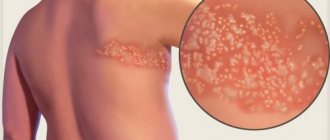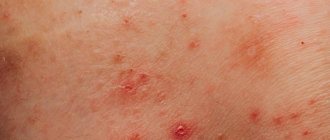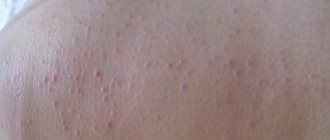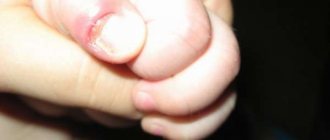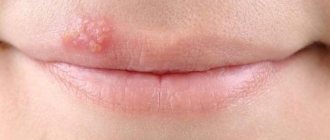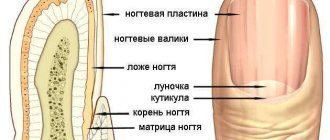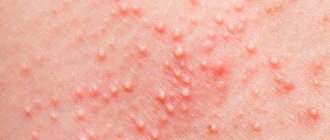Herpes on the hands is less common than other parts of the body. Herpes usually occurs on the fingers, making them painful and swollen. The disease can spread further down the arm. Herpes on the palms is a typical complication of the disease.
Can there be herpes on the hands - this question worries those people who are carriers of the herpes virus. Typically, manifestations of the disease are noticeable on the face and around the mouth, but occasionally herpes can appear on the hands.
Causes of herpes on the hands
The development of herpes on the skin of the hands is explained by damage to the human body by one of the strains of the causative agent of this disease:
- The causative agent of herpetic rash on the lips is herpes simplex virus type 1 (HSV-1).
- A herpes virus that affects the intimate area is herpes strain 2 (HSV-2).
- Herpes zoster, which manifests itself as shingles.
The main route of transmission of infection is direct contact of fingers with another source of the disease. This happens when treating rashes or touching them without personal protective equipment.
“Doctors are hiding the truth!”
Even “advanced” herpes can be cured at home. Just remember to drink once a day...
>
Factors that contribute to infection with the herpes virus are:
- chronic diseases in the acute stage, the presence of other infections and inflammatory processes;
- long-term use of certain medications;
- surgical interventions;
- severe nervous stress;
- acute colds;
- overwork;
- deficiency of vitamins in the body;
- long-term skin diseases;
- hypothermia, sudden change in temperature;
- injuries or damage to the skin of the hands.
All these reasons lead to a decrease in the protective functions of the body’s immune system, a weakening of vitality, and the inability to fight dangerous infections. This condition is a favorable environment for the pathogen, human infection, and rapid development of the disease.
The risk zone includes:
- athletes (various types of wrestling, rugby, American football);
- persons who are promiscuous;
- physicians, mainly dentists and gynecologists;
- children with herpetic stomatitis or cold sores.
Sores on a child’s hands may appear due to the habit of putting his hands in his mouth. In some children, a herpes infection lives in the body from birth - it was transmitted from a sick mother during childbirth.
Symptoms
The first signs of the disease are rashes on the skin (fingers, between the fingers, hands and palms), causing burning or itching, and increased irritability. The lack of antiviral therapy at this stage leads to the progression of herpes and the development of the following symptoms:
- the rashes are localized on the fingertips. In advanced cases, a burning rash appears on the palms and other parts of the hands;
- attempts to clench your hand into a fist cause discomfort and pain;
- blisters transform into ulcers or purulent wounds;
- body temperature changes abruptly.
Opening fluid-filled blisters is dangerous due to the risk of infection. When the rash between the fingers is damaged, the virus strain spreads to healthy tissue. At the last stage of the disease, the wounds under the ulcers heal, but for a long time the skin looks covered with scars.
One of the signs of the disease is a change in body temperature.
Symptoms of herpes infection on hands
The initial stage of infection of the hands by the herpes virus is characterized by a burning and itching sensation on the skin, and slight swelling or redness appears. On day 3, the skin becomes covered with small, painful blisters with a clear liquid inside containing a large amount of virus. During this period, the patient is especially contagious.
Regardless of therapy, the rash lasts up to 4 days and usually covers a small area - 1 - 2 fingers. They are located on the outer phalanx, near the nail plate. In some cases, damage occurs to the surfaces of the palms and the skin between the fingers. Rashes on the shoulders, forearm and elbows are rare.
After ripening, the sores burst and dry out, forming dry crusts and scabs. The infectious contents of the papules penetrate back into the skin, causing new foci of infection.
Complete recovery occurs in approximately 10 to 14 days; new skin cells form at the sites of the ulcers.
What herpes looks like on the hands of adults and children is shown in the photo.
Herpetic lesion of the hand
Herpetic blistering rash on the finger
Herpes watery formations on the palms
Causes
The leading cause of herpes on the palms is household. Contact with the things of a carrier of the disease is enough to become infected. There is a high chance of becoming infected through a kiss. Sexual transmission is not excluded, but still more often herpes of the lips or genitals is transmitted in this way.
Much less often, herpes infection occurs vertically - from a mother who is a carrier of the disease to a healthy child. Nevertheless, such cases are recorded quite regularly. Doctors also talk about damage to the palms due to touching areas already infected with herpes - lips or genitals. At the same time, doctors do not recommend panicking - there is a danger if the bubbles on the skin have already burst, and there are also cracks and scratches. In general, both of these methods of infection are much less common.
Which doctor should I contact?
If the skin of your hands is affected by a herpes virus infection, you should consult a dermatologist; it is this specialist who studies the nature of such diseases. After confirming the diagnosis and conducting the necessary examinations, the doctor will prescribe treatment aimed at suppressing symptoms and preventing relapses.
It is not recommended to treat herpes on your hands on your own; improper therapy can lead to complications, spread of the rash to other parts of the body, and a long recovery period.
Traditional methods
In the fight against herpes infection on the hands, folk recipes have proven their effectiveness and safety. Popular means include:
- Decoction and tincture of Echinacea purpurea . They increase immunity at the general and local level.
- Kalanchoe or aloe juice will serve as an excellent antiseptic. It is applied to the affected areas several times a day.
- Green tea . It can be used to disinfect wounds. To do this, soak a bandage in the liquid and wrap it around the sore arm for several hours.
- Arnica infusion is applied to the problem area for 10 minutes three times a day. It relieves inflammation and has an antiseptic effect.
- Celandine juice for herpes on the palms can be applied until the healing stage. It prevents the spread of the rash and disinfects wounds.
When herpes on the hands is observed in children, you should choose the safest treatment option, since many herbal remedies can cause a serious allergic reaction. The child needs to be shown to a specialist and follow his recommendations.
If herpes occurs on the elbows, fingers, or palms, you should be extremely careful not to spread the infection to healthy areas of the body. The duration of the disease is 10-14 days, but with proper treatment this period can be shortened by several days.
Diagnostics
Rashes on the hands are often confused with manifestations of allergies, insect bites, urticaria, burns from poisonous plants, eczema, and other dermatitis. Only laboratory tests will help to reliably determine the nature of the virus.
A blood test is prescribed to identify the type of pathogen. Depending on this, the appropriate treatment is determined. A dermatologist examines the contents of the ulcers and examines scrapings from their surface.
Features of papules on the extremities
There are different types of rash:
- Maculae are spots that do not rise above the level of the epidermis and differ from healthy skin in color, structure, and surface.
- Blisters are rashes that protrude above the surface of the skin. Inside the formations there is a clear or translucent liquid.
- Papules are nodular neoplasms that do not contain cavities. The rashes are dense to the touch, rise above the skin, and vary in size from 1 mm to 2 cm.
- Erythema is severe redness resembling inflamed lesions.
- Erosions and ulcers are defects of the epidermis or mucous membrane that are the result of inflammation.
- Pustules are subcutaneous formations filled with purulent masses.
- Hemorrhages are neoplasms with bloody contents. The formations are bright or dark red in color, sometimes with a bluish and purple tint. This pathology in the epidermal layer occurs due to the rupture of capillaries and the release of blood to the surface of the dermis.
- Vesicles are small bubbles on the skin, not exceeding 5 mm in diameter, the cavity of which is filled with liquid. Rashes may appear on the surface of the dermis and mucous membranes.
If the formations are abundant and are accompanied by additional symptoms (fever, itching, nausea, burning, weakness), you must call an ambulance. The appearance of multiple hemorrhages in parallel with headache, general malaise and drowsiness is dangerous. These symptoms indicate serious pathologies and the help of specialists is necessary.
Papules located between the toes in most cases indicate the presence of fungal diseases. Painful blisters on your fingers may be a sign of herpes. Vesicles localized on the hands, especially between the fingers, and accompanied by severe itching may indicate the penetration of scabies mites into the skin.
These skin manifestations should prompt the patient to go to a dermatologist or call a doctor at home. Especially when it comes to small children.
Treatment of herpes on hands
The treatment method is prescribed by a specialist after confirming the diagnosis. The choice of medications depends on the stage of the lesion, the causes of the disease, and the individual characteristics of the body. Traditional medicine recipes are used in consultation with a dermatologist and are an additional means for treating the disease.
The treatment method for infection includes several rules:
- compliance with personal hygiene rules;
- taking antiviral drugs;
- external treatment of rashes;
- strengthening the immune system;
- traditional methods.
Drug therapy
Treatment of herpetic panaritium is carried out comprehensively, using the following groups of drugs:
- Antiviral direction. Block the development and spread of the virus - Herperax, Acyclovir, Valtrex, Virolex, Famciclovir-teva. For local treatment, gels or ointments are used: Fenistil Pentsivir, Allomedin, Viru-Merz, Fukortsin solution.
- Immunomodulators. Aimed at strengthening the protective function of the immune system: tinctures of echinacea, ginseng, drugs Viferon, Olidetrim, Cytotec, Immunal, Interferon.
- Antihistamines to relieve irritation and itching: Suprastin, Diazolin, Tavegil.
The tablets are taken orally in the dosage indicated in the instructions on the package. External agents are applied several times a day, maintaining an interval of at least 4 hours between procedures.
Treatment should begin at the first symptoms of the disease. If adverse reactions occur at the treatment sites, you must contact your doctor to adjust the medication.
Treatment with folk remedies
In addition to medications, ointments, infusions, lotions or decoctions of medicinal plants prepared at home are used.
Honey help
Honey speeds up the healing process, soothes pain, relieves symptoms, and restores damaged tissue.
Compresses made from honey with streptocide are applied to the ulcers for 15 minutes 4 to 5 times a day. The streptocide tablet is crushed into powder, 1 tsp is added. liquid honey, apply a thick layer on a cotton pad or bandage.
Treat the sores with a mixture of honey and fir oil, taken in equal quantities, leave for 10 minutes, then carefully wipe off with a cotton swab. This procedure is carried out in the evening before bedtime.
Mumiyo and calendula
This folk remedy is a natural antimicrobial agent, relieves pain syndromes, disinfects, and heals wounds.
1 tbsp. l. 50 grams of calendula flowers are poured. boiling water, cover with a lid, leave for 1 hour. Add 3 mummy tablets to the strained infusion. Use the prepared product to wipe areas that are very itchy, or apply a compress for 15 minutes.
Arnica flowers
Dried flowers (3 tablespoons) are poured into ½ liter of boiling water, simmered over low heat for 10 minutes, then left for 2 hours, filtered. Moisten a gauze bandage with the cooled broth and apply it to the wounds for 15 minutes. Repeat the procedure 3 times a day.
Garlic treatment
Garlic oil suppresses the development of the virus and is used for local external treatment.
To prepare it, grind 3 cloves of garlic until mushy, add 2 tsp. butter. This mixture is used to treat sores on the fingers 3 times a day. Lemon juice is used to neutralize the odor.
Celandine
The juice of the plant is used to burn problem areas according to the following scheme: apply to the sores 5 times every 3 minutes. 3 cycles are carried out per day, after the procedure the skin is treated with a softening nourishing cream.
Essential oils
For herpes rashes, use oils of eucalyptus, mint, tea tree, fir, myrrh, bergamot, and lavender.
Before use, one of the oils or a mixture of them is diluted with any neutral oil (olive, coconut) in a ratio of 1:3, and lubricated on sore spots.
If wounds do not heal for a long time, use a compress of an oil mixture and 1 tsp. alcohol tincture of calendula.
General treatment regimen
Treatment of herpes infection takes 10 to 14 days. In cases where the disease does not go away during this period, it is necessary to contact a specialist again.
In most cases, the disease goes away on its own. The main task of the patient during treatment is to avoid complications in the form of additional infection.
The treatment regimen for herpes on the hands is aimed at relieving local signs of the disease and increasing the patient’s immunity.
Antihistamines
Designed to relieve swelling, itching, burning. Patients are recommended to use Tavegil, Suprastin, Zodak, Fenistil, Zyrtec and their analogues.
Painkillers
To relieve the painful syndrome and improve the general condition, patients are prescribed the use of topical creams and ointments based on lidocaine and benzocaine.
The drugs Dinexan, Lidocaine, Relief Advance, Menovasin, Fenistil gel showed high effectiveness. The products are applied directly to the area where the bubbles form. The use of systemic painkillers is not recommended.
Antiseptic solutions
It is recommended to treat rashes with antiseptic agents daily. Treatment helps prevent the spread of infection.
Experts recommend making baths from potassium permanganate or soda. It is allowed to wipe the formations with Miramistin, Chlorhexidine and other antiseptics.
Immunomodulatory drugs
During the period of exacerbation of infection, patients are prescribed a course of immunomodulators to increase the body's protective functions. This could be Viferon, Genferon, herbal preparations with echinacea, ginseng, eleutherococcus.
Antiviral drugs
In case of complicated herpes infection and weak immunity, patients are prescribed strong antiviral drugs: Valacyclovir, Famvir, Acyclovir. Their use is permissible in cases of general deterioration in the patient’s well-being and damage to large areas of skin.
During the treatment period, patients are prohibited from opening the blisters on their own. Untimely opening can lead to the spread of infection and the addition of a bacterial infection.
Possible consequences and complications
The main danger of the disease is the entry of pathogenic bacteria or other infection into the wound. The development of purulent inflammation significantly complicates treatment and threatens damage to nerve fibers and disruption of the blood supply to the fingers.
Herpes must be treated to stop it from spreading to other parts of the body. Transfer of infection to the genital area causes damage to the internal genital organs of a woman, contributes to the development of diseases of the uterus, and disrupts reproductive function. During pregnancy, genital herpes threatens to disrupt the development of the fetus, creating a threat of miscarriage or premature birth.
Herpes zoster affects not only skin tissue, but also peripheral nerve fibers. The consequences of improper treatment of such a disease can be neuralgia of the limbs, neuropathy, weakening of motor functions, and exacerbation of pain.
In children, the risk of infection spreading to other parts of the body and mucous membranes is much higher than in adults. The cause of the development of stomatitis, ulcers on the lips, rashes on the face and eye area can be herpes on the hands.
Prevention methods
After a herpetic infection appears on the hands, the main task of patients is to prevent relapses. To do this, you must regularly adhere to a number of rules.
Personal hygiene rules
Patients need to wash their hands after going outside or visiting public places. It is recommended to use antiseptic liquid soap with a dispenser.
If foci of infection appear on the body, you must wash your hands after each contact with the affected area. It is prohibited to use personal hygiene items for people who have manifestations of herpes.
Boosting immunity
The appearance of a herpes infection is associated with a weakening of the body's protective functions. To increase them, patients are recommended to use vitamin and immunomodulatory complexes.
Healthy lifestyle
The body's resistance to infectious diseases can be increased by giving up bad habits and increasing physical activity. Patients are recommended to exercise, run, swim, and spend more time outdoors.
Particular attention should be paid to sleep and rest patterns. A full night's sleep helps eliminate fatigue, reduce psychological stress, and avoid depression.
Proper nutrition
Compliance with the rules of dietary nutrition allows you to normalize the metabolic process in the body, eliminate a number of diseases of the gastrointestinal tract, biliary tract, and liver. This has a positive effect on the condition of the body as a whole.
Compliance with safety rules when treating foci of infection
During a relapse of the disease, it is necessary to follow safety rules when treating lesions. Therapeutic creams and ointments are applied using a swab or cotton swab. When lesions are located on the body, protect hands with rubber gloves.
Exacerbation of the disease often occurs in the autumn-winter period. During this time, patients are advised to carefully monitor the skin of their hands. Timely moisturizing helps to avoid microcracks, which become foci for the spread of infection.
It is also important to promptly recognize and treat allergic reactions and manifestations of dermatitis. Compliance with preventive measures helps to avoid the recurrence of herpes infection.
Features of infection in children
Herpes between the fingers is more common in children than in adults, due to the fact that the child’s skin is still very delicate and cannot provide complete protection against the penetration of viruses and infections. In addition, infection is facilitated by neglect of hygiene and the presence of multiple microcracks on the hands of children, resulting from their hyperactivity. When a child comes into contact with a carrier of herpes, the virus quickly penetrates the child’s body, easily bypassing the still weak immunity.
Infection with herpes does not mean that the skin of a child’s hands will immediately break out in a rash. The virus can remain in a passive form and is activated only when provoking factors appear (for example, colds or infectious diseases, hypothermia). The group at increased risk of infection includes children who have herpetic stomatitis - the habit of putting fingers in the mouth can lead to the spread of the disease to the upper extremities.
What can be confused with
To treat herpetic felon, you should definitely contact experienced specialists, since ignorant people sometimes confuse this pathology with other, less dangerous conditions, including:
- Allergic rashes. A herpetic rash is characterized by crowded lesions surrounded around the periphery by a bright inflammatory halo. The rash cannot spread from the shoulder to the hands.
- Insect bites, which often cause discoloration of the skin, severe itching and swelling. However, this type of rash differs from herpes in the absence of fluid in the vesicles.
- Bacterial felon. This pathology differs from herpetic lesions of the hands by the presence of pathogenic pyogenic microflora in the soft tissues of the fingers and palms.
To treat herpetic felon, you should definitely contact experienced specialists.
Herpetic felon is also confused with the body's reaction to aggressive chemical compounds used in everyday life and industry.



